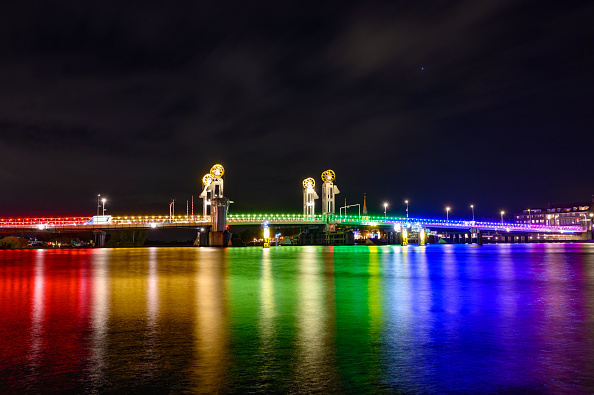 (Photo: Sjoerd van der Wal/Getty Images)
(Photo: Sjoerd van der Wal/Getty Images)
Chicago — Being a better ally for those who identify as asexual — to have a lack of sexual attraction towards others — is what Asexual Awareness Week is all about.
During the last full week in October, the community looks to spread awareness because too often people don’t understand what asexuality is.
The week started in 2010 in an effort to inform others about the stigma around the sexual orientation. The name was changed to Ace Week — this year, Oct. 24 through 30 — in hopes to help include gray-asexual, the spectrum between asexuality and sexuality, and demisexual, feeling sexually attracted to someone when they have an emotional bond with the person, as well.
Ace Week leaves room for reform by trying to break down the misunderstanding surrounding asexuality.
Mika Hurd, uses TikTok to promote Ace Awareness as well as share her story with others. The New England native also uses the platform to shine a light on other forms of LGBTQA+ despite feelings of unacceptance.
“We [asexuals] are often excluded from the LGBTQA+ community,” said the 25-year-old. “Even if people accept asexuality, they are really hesitant to include us.”
Hurd said that LGBTQA+ people assume asexuality refers to straight sexualities, but that’s simply not the case.
“It’s a misconception that asexuality is a modifier to heterosexuality. Asexual is it’s own identity,” she said. “Regardless of gender we simply do not feel sexual attraction in most cases.”
Chicago native and advocate Megan Kramer — with a large following on various social media outlets — has more than 10,000 followers on Instagram. Her page started as a place for bookworms to find new reads, but it quickly evolved as a platform to highlight Ace and trans issues.
Kramer, who is asexual, explained that after discovering her sexuality she wanted to create a page for advocacy. She expressed certain frustrations surrounding these misconceptions and she felt people were behind the times when trying to learn about this sexuality.
“I could never understand why our society made me feel like being disinterested in sex most of the time was a problem,” said the 29-year-old who discovered asexuality in her early 20s.
And while she has been fortunate to better understand herself, there are still battles to fight. She hoped Ace Week can be a tool for the healthcare industry.
“Asexual people have been studied by medical professionals for a long time, like they need to be cured, it’s not and illness,” said Kramer.
She stressed how important it is for asexual people to tear down these social stigmas
as they are just completely false.
“Ace people have to both come out and educate simultaneously, because alot of people don't know what being asexual means. Asexuality is a spectrum, some aces never want to have sex, some experiance sexual attration only after forming a clolse bond.”
It’s important to recognize this mentioned “spectrum” after learning the common misconception that, asexual people do not engage in sexual activity.
Advocate, model and influencer Yasmin Benoit, who studies asexualities at the University of California, San Bernardino, is not shy in her opinions regarding how asexuality is portrayed by the public.
The 24-year-old tweeted, “Not having sex is not synonymous with being asexual.”
On National Coming Out Day, Benoit captioned an Instagram post. “I started using the term (asexual) when I was 15, but most people just reinterpreted what I was trying to tell them --assuming I was just confused, chaste, frigid, stunted--and concluded that I couldnt possibly be asexual.”
“Other people's reactions to your identity aren't a reflection of who you are, they are a reflection of what they don't know,” she said.